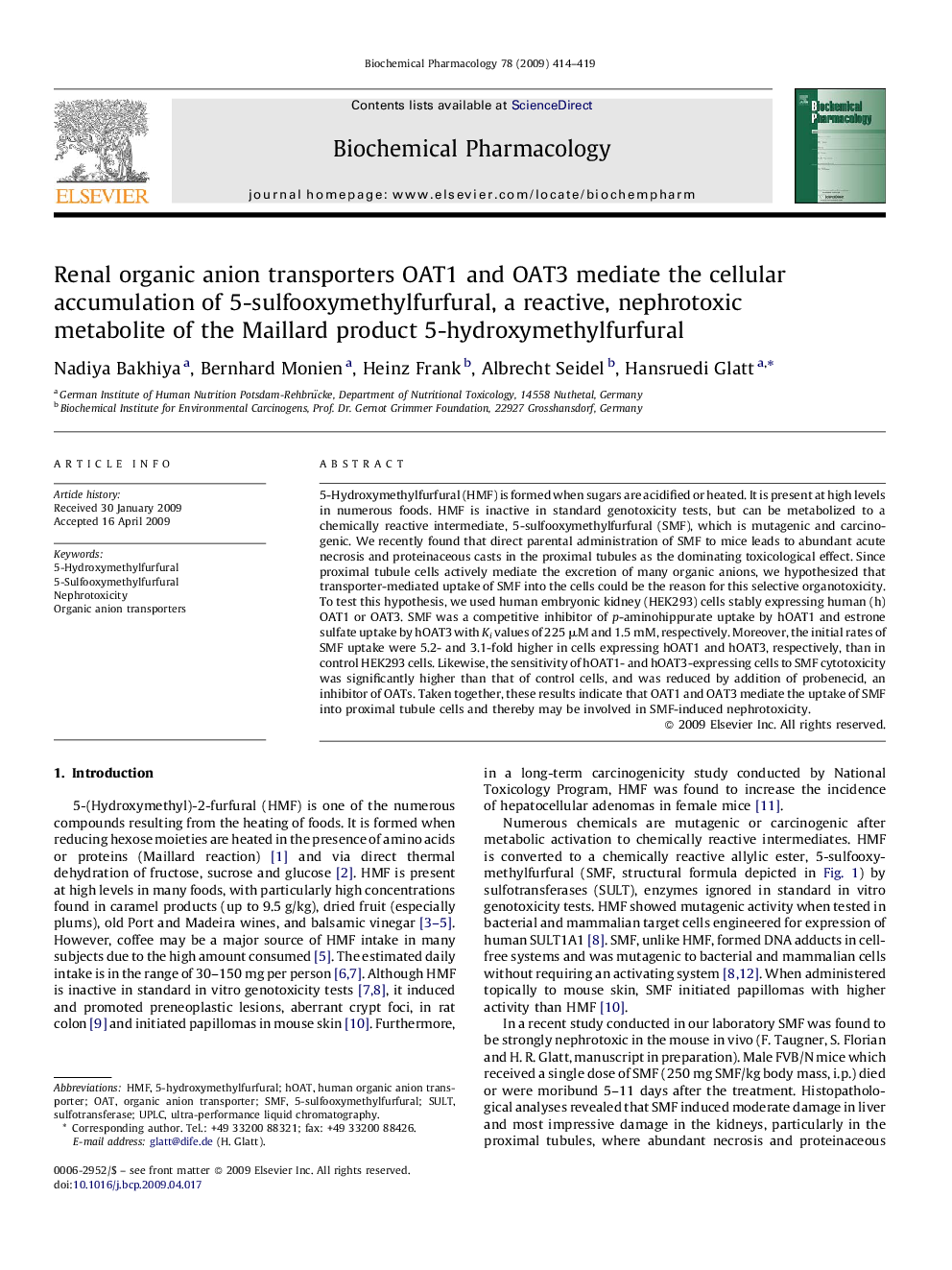| Article ID | Journal | Published Year | Pages | File Type |
|---|---|---|---|---|
| 2514260 | Biochemical Pharmacology | 2009 | 6 Pages |
5-Hydroxymethylfurfural (HMF) is formed when sugars are acidified or heated. It is present at high levels in numerous foods. HMF is inactive in standard genotoxicity tests, but can be metabolized to a chemically reactive intermediate, 5-sulfooxymethylfurfural (SMF), which is mutagenic and carcinogenic. We recently found that direct parental administration of SMF to mice leads to abundant acute necrosis and proteinaceous casts in the proximal tubules as the dominating toxicological effect. Since proximal tubule cells actively mediate the excretion of many organic anions, we hypothesized that transporter-mediated uptake of SMF into the cells could be the reason for this selective organotoxicity. To test this hypothesis, we used human embryonic kidney (HEK293) cells stably expressing human (h) OAT1 or OAT3. SMF was a competitive inhibitor of p-aminohippurate uptake by hOAT1 and estrone sulfate uptake by hOAT3 with Ki values of 225 μM and 1.5 mM, respectively. Moreover, the initial rates of SMF uptake were 5.2- and 3.1-fold higher in cells expressing hOAT1 and hOAT3, respectively, than in control HEK293 cells. Likewise, the sensitivity of hOAT1- and hOAT3-expressing cells to SMF cytotoxicity was significantly higher than that of control cells, and was reduced by addition of probenecid, an inhibitor of OATs. Taken together, these results indicate that OAT1 and OAT3 mediate the uptake of SMF into proximal tubule cells and thereby may be involved in SMF-induced nephrotoxicity.
Graphical abstractFigure optionsDownload full-size imageDownload as PowerPoint slide
